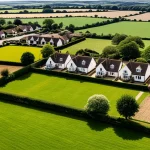Eco-Friendly Fabrics: Definition and Core Characteristics
Understanding eco-friendly fabrics requires recognizing their foundation in sustainable materials and environmentally responsible production methods. These textiles prioritize the use of natural fabrics such as organic cotton, hemp, and bamboo, which minimize environmental harm compared to conventional synthetic textiles. The cultivation and harvesting of these materials avoid harmful pesticides and excessive water usage, reflecting one of the core principles defining environmentally friendly textiles.
Production processes are equally important. Eco-friendly fabrics are often manufactured using low-impact dyes and energy-efficient technologies, limiting chemical waste and pollution. This approach ensures a smaller carbon footprint and supports long-term soil and water health. Certifications play a crucial role in validating these claims. In the UK, certifications like the Global Organic Textile Standard (GOTS) and the Soil Association Organic Standard provide assurance that fabrics meet rigorous ecological and ethical standards. Such certification standards guide consumers to choose truly sustainable textiles rather than greenwashed options.
Also read : How Can You Transform Your UK Home Into a Peaceful Sanctuary?
Together, the materials chosen and production methods applied define the essence of eco-friendly fabrics. They embody a commitment to reducing environmental degradation while maintaining high quality, durable textiles ideal for sustainable living. This alignment of nature-friendly choices and responsible manufacturing helps consumers integrate better options into their daily lives without compromising performance or comfort.
Environmental and Health Benefits of Eco-Friendly Fabrics for British Homes
Eco-friendly fabrics offer significant eco-friendly benefits that enhance both environmental sustainability and health-conscious living within British homes. One of the primary advantages lies in the reduction of household toxins and allergens. Unlike many conventional textiles, low-toxicity fabrics derived from natural fabrics and sustainable materials minimize exposure to harmful chemicals, dyes, and flame retardants that often accumulate indoors. This reduction directly contributes to cleaner indoor air quality, which is especially important for families with young children, elderly members, or individuals with respiratory sensitivities.
In parallel : How Can You Transform Your Living Space with Affordable Décor?
In terms of environmental impact, sustainable home textiles made from eco-friendly fabrics involve production methods that significantly reduce energy usage and carbon emissions. Within the UK context, selecting these textiles helps lower the overall carbon footprint of households since processing eco-friendly materials typically consumes less water and energy compared to traditional fabric manufacturing. Furthermore, the shorter, often local supply chains associated with eco-friendly fabrics reduce transport emissions—a critical factor for meeting climate targets set by British policies.
Lastly, eco-friendly fabrics support health-conscious living by promoting materials that are biodegradable and less likely to harbor dust mites or mold due to their breathable, natural fiber content. This quality not only improves comfort but also lessens the risk of allergen buildup in home environments. Ultimately, integrating sustainable home textiles crafted from eco-friendly fabrics aligns personal wellness with ecological responsibility, enabling British households to foster healthier, cleaner living spaces with a positive environmental impact.
Conventional vs. Eco-Friendly Fabrics: Impact on British Lifestyles
Understanding the differences between conventional fabrics vs eco-friendly options reveals significant implications for British home textiles and environmental impact. Conventional fabrics often rely on synthetic fibers derived from petrochemicals, such as polyester or nylon. Their production consumes large quantities of fossil fuels and generates substantial greenhouse gas emissions. In contrast, eco-friendly fabrics typically utilise natural fabrics or recycled materials, reducing reliance on non-renewable resources and lowering energy use during manufacturing. This distinction translates into a markedly smaller carbon footprint for sustainable textiles.
Regarding lifecycle and environmental costs, conventional textiles tend to degrade slowly in UK landfills, contributing persistent microplastic pollution and waste management challenges. Eco-friendly fabrics, particularly those made from organic cotton, hemp, or bamboo, biodegrade more readily, limiting long-term landfill impact. Additionally, many sustainable fabrics are designed for durability and comfort suitable to varied British climate conditions, such as moisture-wicking and breathable properties, which enhance their practicality in everyday UK homes.
Disposal pathways differ notably as well. While conventional textiles often follow a linear consumption model—use then discard—eco-friendly fabrics encourage circular economy principles. Reuse, recycling, or composting are viable end-of-life options that reduce waste accumulation locally. Consequently, choosing sustainable home textiles helps mitigate environmental damage and supports responsible consumption aligned with growing eco-conscious awareness in UK lifestyles.
The Role of Eco-Friendly Fabrics in Supporting British Sustainability Goals
Eco-friendly fabrics play a vital role in advancing UK sustainability objectives by directly addressing key environmental challenges identified in national policies. The British government’s climate action plans emphasise reducing carbon emissions and promoting resource efficiency. Choosing eco-friendly fabrics supports these goals by lowering energy consumption during manufacturing and minimizing pollutants, contributing to the UK’s commitment to net-zero emissions.
Another critical dimension is the integration of eco-friendly textiles within a broader circular economy framework. Unlike traditional linear production models, sustainable materials encourage reuse, recycling, and local regeneration, all of which are essential to reducing waste in the UK. By adopting these fabrics, consumers and manufacturers alike reinforce eco-conscious living practices that complement government initiatives aimed at sustainable resource management.
Local sourcing of natural fabrics further strengthens the British textile industry while reducing transport emissions. Supporting UK-made sustainable textiles nurtures green jobs and innovation, which align with national efforts to develop resilient economies rooted in environmental stewardship. This dual benefit ensures that eco-friendly fabrics not only lessen environmental footprint but also foster durable economic progress consistent with government climate action strategies.
Practical Steps for Choosing and Integrating Eco-Friendly Fabrics in British Homes
Choosing the right eco-friendly fabrics involves understanding key factors that define genuine sustainable materials. Start by verifying certifications like GOTS or the Soil Association Organic Standard, which confirm a fabric’s compliance with strict environmental and ethical guidelines. These labels ensure the use of natural fabrics produced with minimal chemical input and responsible resource management. Avoid textiles lacking clear certification, as this increases the risk of greenwashing.
When buying eco fabrics in the UK, consider fibre origin, production processes, and end-of-life options. Opt for textiles made from organic cotton, hemp, or bamboo that support soil health and water conservation. The production method should minimize energy consumption and toxic dye use, enhancing the eco-friendly benefits to your home environment. Additionally, choose fabrics designed for durability and ease of recycling or composting to close the loop in textile lifecycle.
Integrating eco-friendly home products can be simple and impactful. Begin with small swaps like cushions, curtains, or bedding made from sustainable fabrics. These items improve indoor air quality by reducing exposure to synthetic chemicals and allergens, promoting healthier British homes. Local UK retailers increasingly stock certified eco fabrics, making it convenient to support eco-conscious living while boosting the domestic green economy. Thoughtful selection and gradual replacement build a more sustainable and comfortable living space aligned with environmental values.







